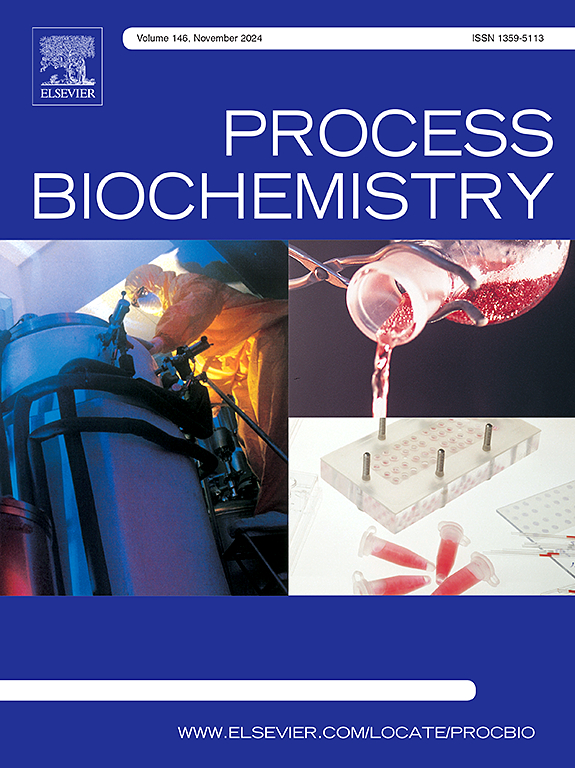Zein-quercetin covalent nanoparticles encapsulating oregano essential oil: Improved stability, antioxidant, and antibacterial properties
IF 3.7
3区 生物学
Q2 BIOCHEMISTRY & MOLECULAR BIOLOGY
引用次数: 0
Abstract
The zein-quercetin covalent complexes were prepared by alkali treatment (A-ZEIN-Q) and free radical grafting (R-ZEIN-Q) and subsequently followed by encapsulation of oregano essential oil (OEO), and alkali grafted zein-quercetin covalent nanoparticles (A-ZQNPs-OEO) and free radical grafted zein-quercetin covalent nanoparticles (R-ZQNPs-OEO) were synthesized respectively. Additionally, the particle size, ζ-potential, microstructure, encapsulation efficiency, release behaviour, surface hydrophobicity, stability, antioxidant activity, and antibacterial activity of these nanoparticles were characterized. The results of infrared spectroscopy showed that a covalent bond was formed between zein and quercetin, the particle size of the nanoparticles decreased, and the degree of densification was higher than that of zein nanoparticles. Unlike the aggregated zein nanoparticles, the zein-quercetin nanoparticles were dispersed more uniformly. In addition, the encapsulation efficiency of OEO in A-ZQNPs-OEO and R-ZQNPs-OEO increased significantly from 45.11 % to 73.42 % and 70.90 % to that of OEO in single zein nanoparticles, respectively. Among the four nanoparticles, A-ZQNPs-OEO shows the highest stability, while the OEO-encapsulated quercetin covalent nanoparticles show better-sustained release performance, lower surface hydrophobicity, and excellent antioxidant and antibacterial activities. Overall, the synthesized OEO encapsulated zein-quercetin covalent nanoparticles possess the ability to be applied in food preservation and other applications.
玉米素-槲皮素共价纳米颗粒包封牛至精油:提高稳定性,抗氧化和抗菌性能
采用碱处理(A-ZEIN-Q)和自由基接枝(R-ZEIN-Q)法制备了玉米素-槲皮素共价配合物,再包封牛至精油(OEO),分别合成了碱接枝的玉米素-槲皮素共价纳米粒子(A-ZQNPs-OEO)和自由基接枝的玉米素-槲皮素共价纳米粒子(R-ZQNPs-OEO)。此外,表征了这些纳米颗粒的粒径、ζ电位、微观结构、包封效率、释放行为、表面疏水性、稳定性、抗氧化活性和抗菌活性。红外光谱分析结果表明,玉米蛋白与槲皮素之间形成共价键,纳米颗粒的粒径减小,致密程度高于玉米蛋白纳米颗粒。与聚集的玉米蛋白纳米颗粒不同,玉米素-槲皮素纳米颗粒分散更均匀。与单粒玉米蛋白相比,A-ZQNPs-OEO和R-ZQNPs-OEO的包封效率分别从45.11 %和73.42 %显著提高到70.90 %。四种纳米颗粒中,A-ZQNPs-OEO稳定性最高,而oeo包封的槲皮素共价纳米颗粒具有较好的缓释性能、较低的表面疏水性以及优异的抗氧化和抗菌活性。综上所述,所合成的OEO包封的玉米素-槲皮素共价纳米颗粒具有在食品保鲜等方面的应用能力。
本文章由计算机程序翻译,如有差异,请以英文原文为准。
求助全文
约1分钟内获得全文
求助全文
来源期刊

Process Biochemistry
生物-工程:化工
CiteScore
8.30
自引率
4.50%
发文量
374
审稿时长
53 days
期刊介绍:
Process Biochemistry is an application-orientated research journal devoted to reporting advances with originality and novelty, in the science and technology of the processes involving bioactive molecules and living organisms. These processes concern the production of useful metabolites or materials, or the removal of toxic compounds using tools and methods of current biology and engineering. Its main areas of interest include novel bioprocesses and enabling technologies (such as nanobiotechnology, tissue engineering, directed evolution, metabolic engineering, systems biology, and synthetic biology) applicable in food (nutraceutical), healthcare (medical, pharmaceutical, cosmetic), energy (biofuels), environmental, and biorefinery industries and their underlying biological and engineering principles.
 求助内容:
求助内容: 应助结果提醒方式:
应助结果提醒方式:


